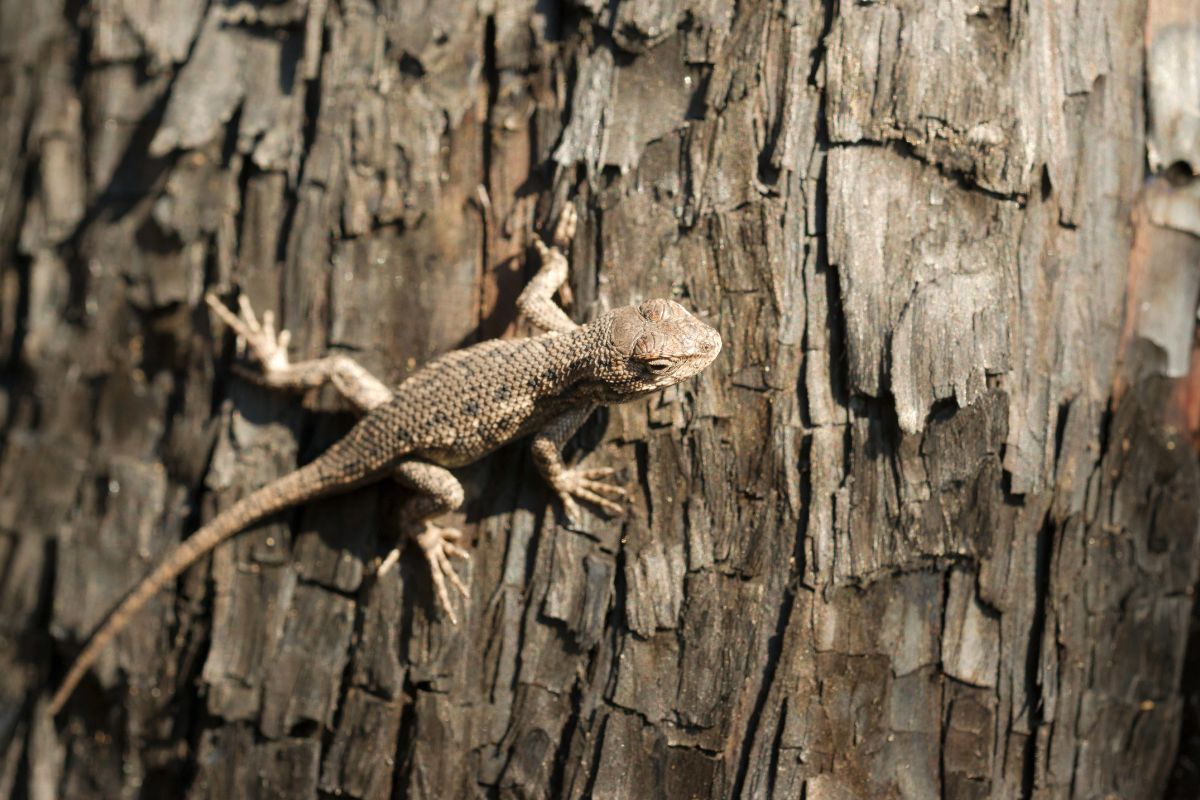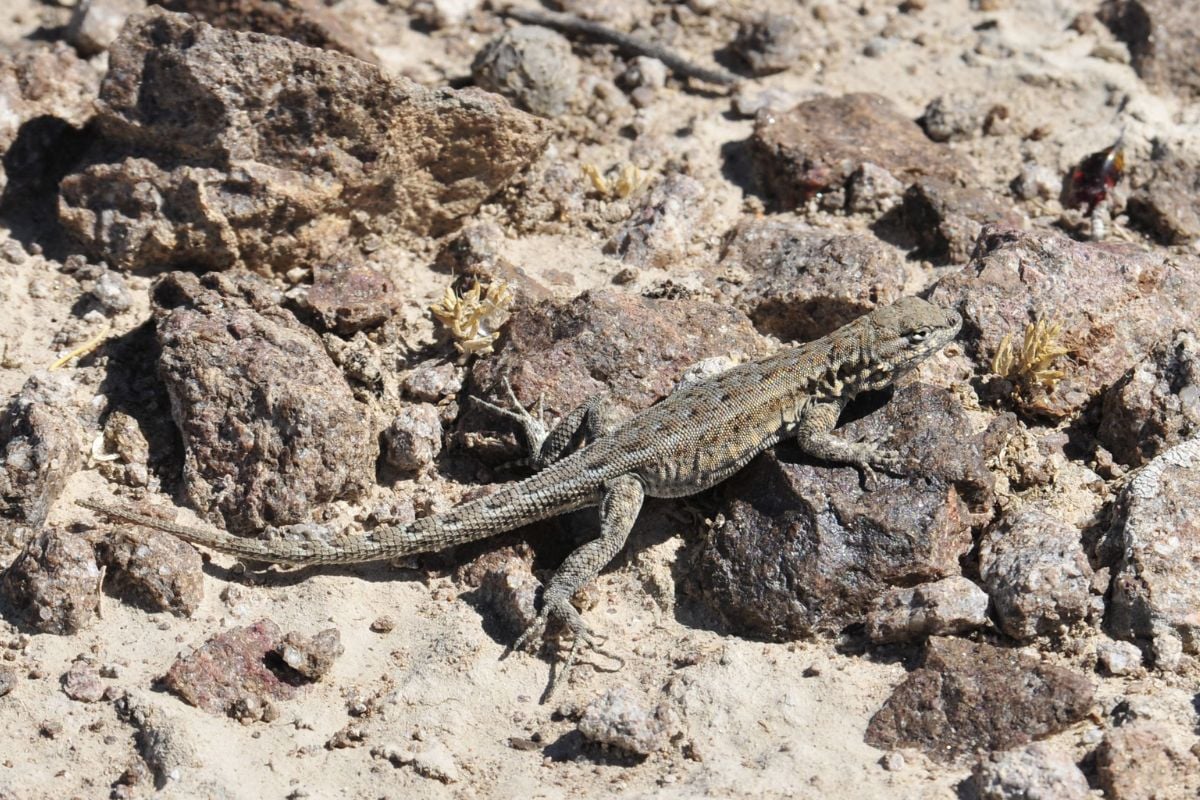The Sagebrush Lizard is a type of lizard native to the western United States and parts of Mexico.
It has become popular with reptile enthusiasts in recent years due to its small size, bright colors, and hardy nature.

Caring for a Sagebrush Lizard requires some knowledge of the needs of these unique reptiles, so if you’re considering adding one to your family, read on for tips on providing a healthy and happy home.
What Are Sagebrush Lizards?
Sagebrush Lizards are small lizards that are typically gray, olive, or brown in color, with dark markings or banding patterns all across their head and back.
They may also have some hints of green or blue on the dorsal surface, and some lizards will also have a black bar on one shoulder, alongside lighter lines across the sides of the body.
Sagebrush lizards are covered in scales, and the females of the species have yellow or white bellies, while males will have a clear, distinctive blue patch on the abdomen, and sometimes on the throat.
They have prominent eyes and a long tail, which they use for balance. These lizards can reach between 4.7 and 9 cm in length and live for about 10 years in captivity.
Housing Requirements
When it comes to housing your Sagebrush Lizard, there are a few factors that you need to consider, and these include:
Size
The most important factor when it comes to housing your Sagebrush Lizard will be the size of the enclosure. It is important to ensure that the enclosure is big enough for your lizard, as they need space to move around and explore.
As a rule of thumb, you should provide an enclosure that is at least twice as long and wide as your lizard – this will ensure that they have plenty of space to explore and hide if necessary and will keep them happy and comfortable.
Substrate
The substrate you choose for your Sagebrush lizard is important, as it needs to be easy to clean and also provide a safe surface for your lizard to move and explore on.
In their natural habitat, Sagebrush lizards tend to live in wide, open spaces with sandy soil, so a suitable substrate should mimic this environment. We recommend using either reptile carpet, sand, or gravel as your substrate.
Lighting And Temperature
Sagebrush Lizards require UVB lighting to maintain a healthy level of Vitamin D3 in their diet, so you should ensure that the enclosure is equipped with a good quality UVB bulb.
You should also provide your lizard with an area that is slightly cooler than the main enclosure, as this will give them a space to retreat to when the temperature gets too hot.
The ideal ambient temperature range for Sagebrush Lizards is between 65 and 80 degrees Fahrenheit, so make sure you have the right set-up to accommodate this and keep your lizard happy and healthy.
Climbing Equipment
It is also important to provide your Sagebrush Lizard with plenty of climbing equipment, such as branches and rocks. This will give them an area to explore and climb on, which will also help to reduce stress levels.
The branches should be placed in different areas of the enclosure so that your lizard can move around and explore, and offer an array of heights and textures to allow them to practice grip and keep their muscles in good shape.

Diet
Sagebrush lizards are omnivorous, so you should provide them with a varied diet that includes both insects and plant matter. They should be fed daily with a variety of live or frozen insects such as crickets, mealworms, and wax worms (see also “Waxworm Care Sheet“).
These in turn should be fed at least 24 hours before being fed to the lizard with tropical fish flakes, as well as plant matter such as leafy greens, including g collard greens, mustard greens, and kale to ensure that the lizards get all the vitamins that they need,
You should also supplement their diet with calcium powder to ensure they are receiving all the essential vitamins and minerals they need.
Young lizards should be offered pinhead crickets once a day and should be given one or two at a time – make sure that your lizard has actually eaten the cricket each time before giving more.
As your pet grows, you can start to change to adult crickets, and introduce mealworms into their diet, again, taking time to ensure that they have eaten properly at every meal.
It is also important to remove uneaten food from the enclosure after 24 hours, as leaving this in place can cause damage and injury to your lizard.
Fresh Water
Always ensure that your Sagebrush Lizard has access to clean, fresh water at all times – this can be provided in a shallow bowl or dish and should be changed daily.
Handling
When it comes to handling your Sagebrush Lizard, it is important that you are gentle and patient. Gently scoop up your lizard with both hands and make sure they feel secure and supported, as it may try and wiggle out of your hands.
Your lizard may also become stressed if handled too much, so it is important to limit handling time to a few minutes at a time. This will ensure that both you and your pet remain stress-free!
Some top tips for handling your Sagebrush lizard safely include:
- Make sure your hands are clean and free from dirt or oil.
- Move slowly and don’t make sudden movements as this may startle your lizard.
- Speak in a low, gentle voice when handling your lizard to help keep them calm.
- Never grab them by their tail, as this could cause them injury or stress.
- Provide plenty of support when handling them and make sure they feel secure.
- Always follow their lead – if your lizard doesn’t seem to be enjoying being handled, it’s best to let them go and give them some space.
Final Thoughts
Sagebrush lizards are a fascinating species that require careful care and attention. By providing them with the right equipment, diet, and handling techniques, you can ensure that your lizard stays happy and healthy for many years to come!
- Can Leopard Geckos Eat Silkworms? - March 11, 2024
- Do Leopard Geckos Climb? - March 4, 2024
- Do Leopard Geckos Bask? The Answer Will Surprise You - February 21, 2024
